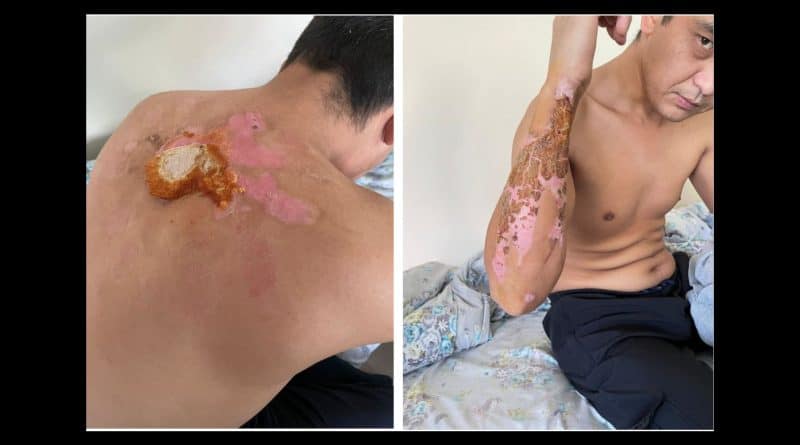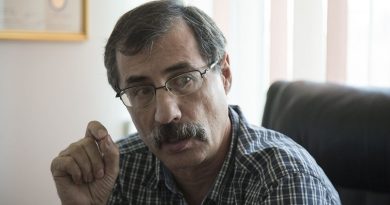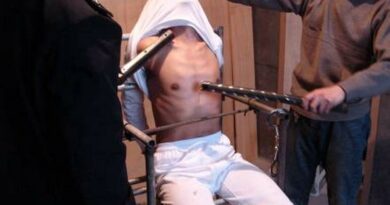Kazakhstan: New details of torture of participants in the January events
Details of the torture of Zhasulan Amangeldinov, who was detained after the January riots in Almaty, became known.
As ACCA has already reported, Sayat Adilbekuly, who received a gunshot wound during the riots and was taken by the special services barefoot and undressed from the hospital and thrown into pre-trial detention center LA-155/18, spoke about the torture of Amangeldiev live on Instagram.
“Zhasulan Amangeldinov was in our cell. When he was brought in, forensic experts recorded minor abrasions and beatings on him. He also had an injury to his left eye. After the trial, he was taken somewhere and returned after 4-5 hours barely alive. He said that he was doused with boiling water. Boiling water was poured directly onto his clothes. He asked to take off his clothes because he was in a lot of pain. When we began to undress him, the top layer of his skin was removed from him. It was terrible,” said Sayat Adilbekuly.
A little later, deputies of the OSCE Parliamentary Assembly (OSCE PA), who met with Zhasulan while conducting their own investigation of the January tragedy and the numerous human rights violations that followed, confirmed the information about the torture of Amangeldinov.
In addition, photos of injuries received by Amangeldinov are actively circulating on social networks.
And now the details of the detention and torture of Zhasulan have become known. According to the human rights group #IHaveAChoice #ActivistsNotExtremists, on January 5, 29-year-old Zhasulan Amangeldinov was returning home from work and ran into a crowd of protesters. People invited Zhasulan to go with them, but he refused. And when he made his way through the crowd, a rubber bullet hit him in the left eye, as a result of which the pupil burst. In addition, his ear and nose were injured.
Zhasulan was hospitalized in the city hospital of Almaty No. 5, where he underwent surgery. However, the eye couldn’t be saved. On January 8, armed security forces came to the hospital, they immediately threw Zhasulan to the floor and began to beat him. Then, barefooted, they dragged him into a car and took to pre-trial detention center LA-155/18. There he, like other detainees, was tortured and constantly beaten. On January 14, the trial took place. It was as fleeting as the trial of Sayat Adilbekuly and other detainees. After the trial, Zhasulan was repeatedly taken for interrogation to the basement, where, according to the assurances of the detainees, the torture room is located. He was required not only to confess his guilt, but also to slander his cellmates. When Amangeldinov refused to do so, they tapered his mouth, and also wrapped his hands and feet with scotch tape and began to beat him. Then they began to pour boiling water from the kettle on his back and right arm. According to Zhasulan, torture lasted about 5-6 hours. After that, he was returned to the cell, where other detainees removed his T-shirt with the top layer of his skin that had adhered to it.
Amangeldinov’s condition worsened significantly after such interrogations. He was transferred to the sanitary unit, but he didn’t receive proper medical treatment there. And only on January 21, Zhasulan was hospitalized in the Eye Department of the Regional hospital of Almaty, where he underwent another eye operation. On January 28, Amangeldinov was again on the operating table; his broken jaw was being pieced together. On January 31, Amangeldinov was discharged from the hospital and sent home on bail. Zhasulan, together with his lawyer, wrote a statement about torture. He will have to undergo another operation in order not to lose his sight completely.
Meanwhile, on February 16, the Ministry of Internal Affairs of Kazakhstan held an emergency briefing on information about torture spread on social networks. According to Zhanat Eshmagambetov, Chairman of the Committee for the Penitentiary System, the information about torture is not true.
“There is a massive false stuffing of unreliable information about allegedly committed torture within the walls of pre-trial detention centers. We declare responsibly: they don’t correspond to reality and mislead the public! It even got to the point that frankly, delusional fake news about the creation of torture cells in the style of the medieval Inquisition in the pre-trial detention center of Almaty is being spread. I want to assure you that this doesn’t exist and cannot be,” Eshmagambetov said.
He also emphasized that all the injuries of the detainees, which are presented on social networks as the result of torture, were received by them not in the pre-trial detention center, but directly during the riots.
“Wounds were received by them during the riots, during attacks on administrative buildings, employees, and were recorded by us upon reception! We earnestly ask the relatives of those arrested and remanded not to give in to panic and false information about their loved ones. I repeat once again that now we are faced with a deliberate distortion of events in the information space. All this is done to discredit the investigation process and deliberately divert attention from identifying the perpetrators. We have informed and will inform the Prosecutor’s Office about each fact of revealed bodily injuries. This is our firm attitude. Not only investigators and prosecutors, but also defenders of suspects can access these materials in the prescribed manner. At the same time, understanding the current situation and our responsibility, we invite civilian specialists for regular medical examinations,” he said.
According to him, there are currently 728 people accused of participating in the January riots in the pre-trial detention centers of the country, and about 270 more people have been released on bail or are under house arrest.
“Now, when society’s attention is riveted to the state of the conditions of detention of citizens arrested in connection with the January events, we have doubled control in pre-trial detention centers, including opening them to the maximum for public monitoring,” Eshmagambetov emphasized.
He also said that correctional institutions are regularly visited by members of public monitoring, deputies, as well as the Commissioner for human rights in Kazakhstan, Elvira Azimova. At the same time, none of the detainees, with whom the above-mentioned people met, complained about illegal actions on the part of employees of institutions.




